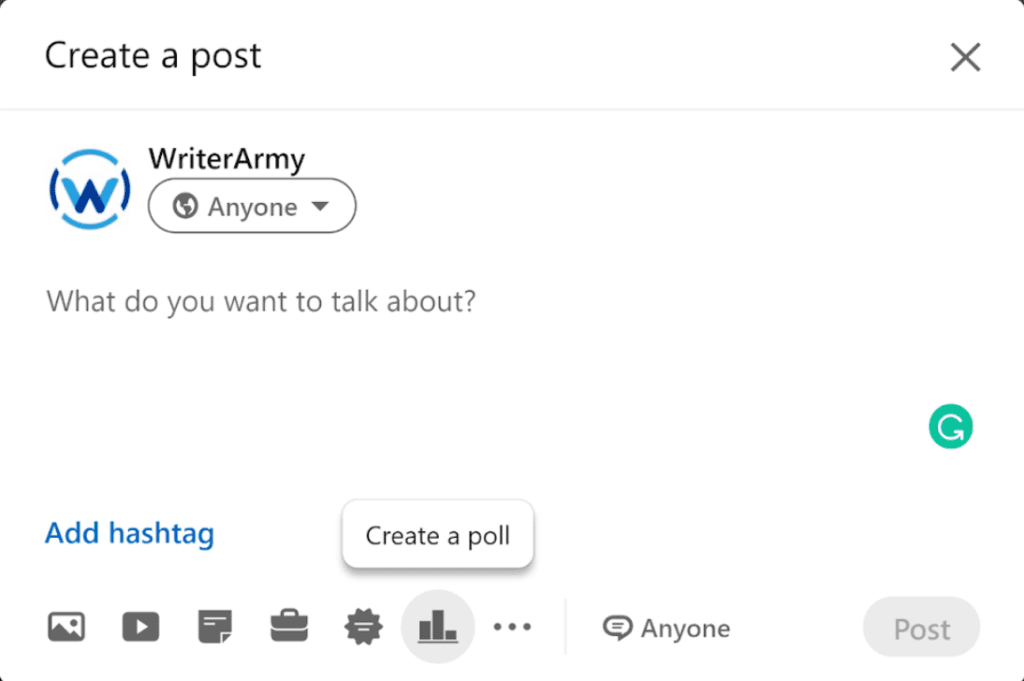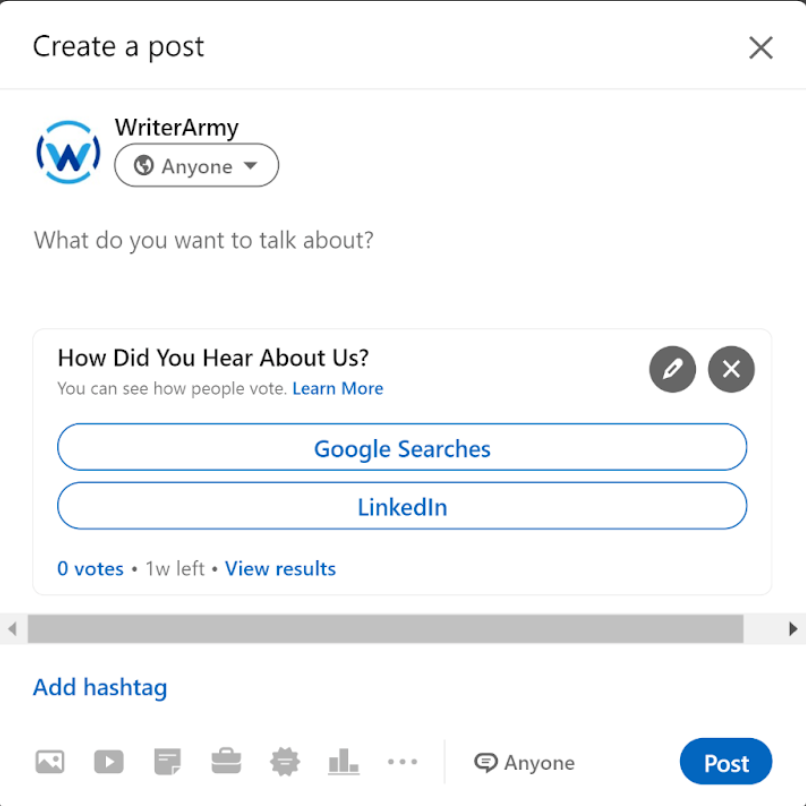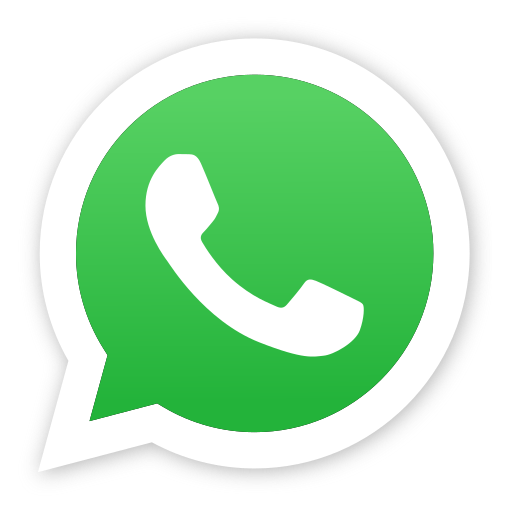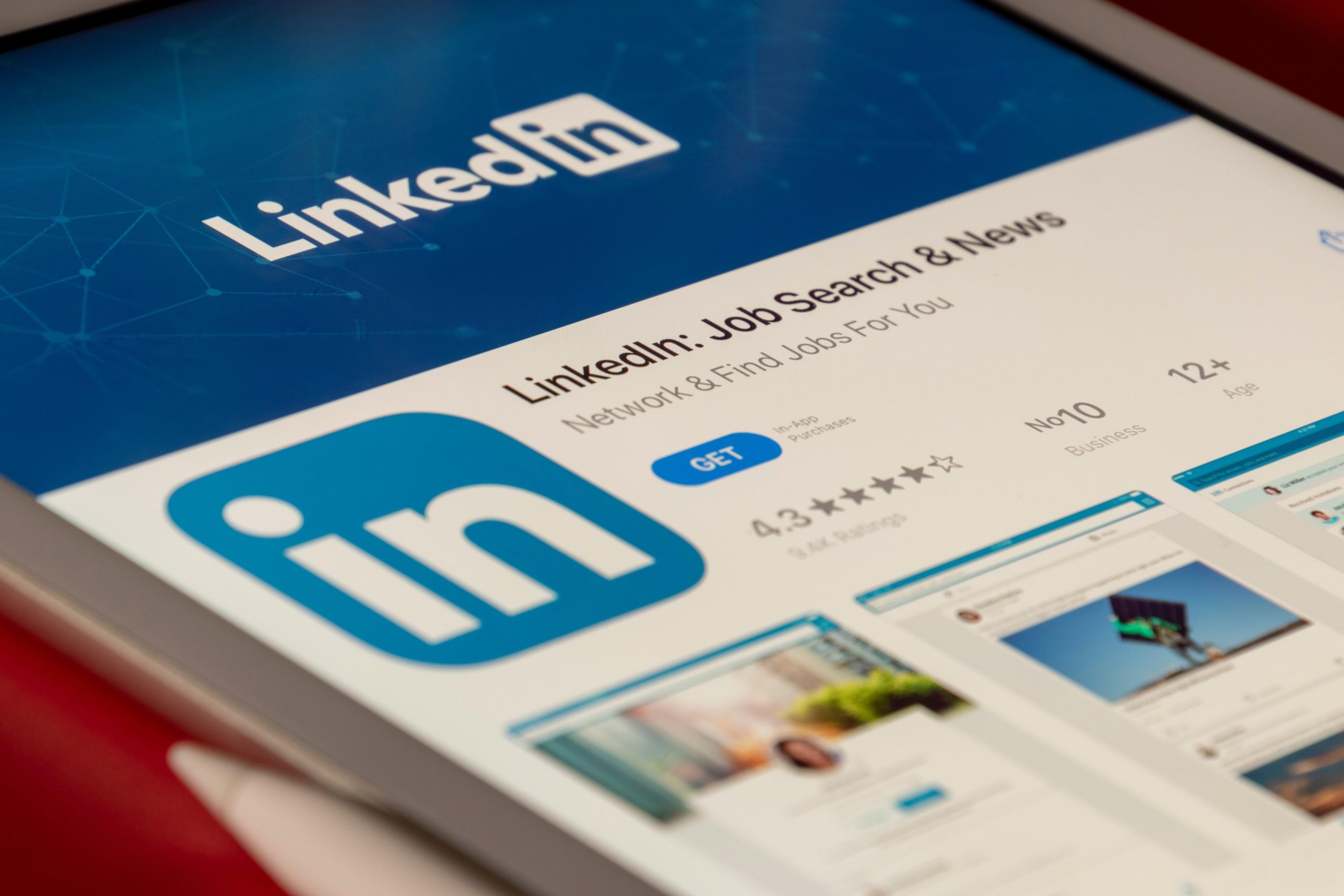LinkedIn Polls: 20 Strategic Questions You Should Ask Your Audience
People love voicing their opinions on everything from restaurant choices to politics. So prompting audiences with strategic LinkedIn polls is an easy way to increase your brand’s engagement.
By posting polls on LinkedIn, not only can you gain valuable insight into the minds of your customers, but you can also get higher exposure and brand awareness among those outside of your network–especially if they go viral.
However, those responses are only useful when you ask the right kinds of questions. So, to help you take advantage of them, let’s take a better look at what LinkedIn polls are, their many benefits, and how you can use them to start conversations, before jumping into twenty of the top strategic questions you can ask today.
What Are LinkedIn Polls?
LinkedIn Polls are a feature the platform’s creators designed to help you gain insight into the minds of not only your audience members but also anyone else who uses their platform. You can use them to learn about buyer preferences and perspectives on a wide range of topics. This will help you keep on top of current trends and stay relevant to online conversations.
It’s important to note that LinkedIn’s polls limit you from asking audiences sensitive questions about their political opinions, health, or other topics. Further, everyone using the polls must comply with LinkedIn’s standard terms and additional applicable policies.
Benefits of Using LinkedIn Polls
LinkedIn polls are an easy-to-use function that can benefit you in several different ways.
Most importantly, they allow you to interact with a wide range of people–even those outside of your immediate network–and gain information from them. You can learn who the people seeing your polls are, what their pain points are, what they want most from your brand, and so much more.
They also help you boost your engagement with active LinkedIn users as they interact with your account. This prompts LinkedIn to drive even more traffic to your page, increasing your chances for lead generation, engagement, and sales by going viral on their platform.
And as more people interact with your polls, a connection is built between you and that individual that creates a sense of trust which makes them more likely to return to your content time and time again.
Additionally, LinkedIn polls are very short with 140-character limits for questions and 30-character limits for responses. This optimizes both your time creating the poll and your user’s time reading it which can lead to more responses and engagement.
Starting Conversations with LinkedIn Polls
You already know how to connect well with your target audience, but what about those who aren’t in your network?
Well, LinkedIn polls can help you start conversations with people who know little to nothing about your brand. Polls are eye-catching, engaging, and much more likely to get higher rates of exposure than other post types may be able to generate.
When you’re looking to start these new conversations, make sure to keep a few key tips in mind::
- Keep your polls short and easy to answer. Questions are limited to 140 characters and responses can only be 30 characters, so you need to be very intentional about what you want to ask. And the easier your question is to answer, the more people will respond to it.
- Don’t forget about hashtags. Hashtags help LinkedIn sort your polls into categories to make your outreach to new people as efficient as possible.
- Polls cannot be edited once you publish them. This means you need to pay special attention to spelling, grammar, punctuation, and content mistakes because if you want to change anything after you publish, you have to completely erase the poll and start over.
- Make sure to avoid publishing polls about potentially offensive topics. If your polls overstep the content regulations LinkedIn sets, they may remove them. Instead, keep your polls relevant to your audience without making them inappropriate.
- Running multiple polls at once can seem spammy, so make sure to avoid having too many running at once.
How to Use LinkedIn Polls
LinkedIn polls are straightforward to use, no matter if you’re on a desktop, tablet, or another mobile device. To create a LinkedIn poll, just follow these simple steps:
First, on your LinkedIn homepage feed, click on the “Start a Post” bar at the top of the screen.

Then, select the poll icon at the bottom of the pop-up screen.

After that, the poll screen will pop up and you can input your question and up to four response options.
You can also set how long you want the poll to be active.
Next, click “Done” at the bottom of the screen and fill out the rest of your post. You can add a fun caption to get people interested in your poll and a few key hashtags, and you’re done. You can sit back and just watch the poll votes roll in.

Now that you know how LinkedIn polls work and how to make one, let’s dive into twenty questions you can poll users and customers about today.
Twenty Strategic Questions to Ask Your Audience
Even though LinkedIn polls can be limited in the response you get out of them, you don’t have to be limited in the questions you ask. But if you’re struggling to come up with solid, strategic questions to ask audiences, check out the following twenty options sure to help start conversations that promote better engagement and brand awareness.
1. What’s Your Favorite Post Format?
While there is some evidence that video content does better for the majority of social media accounts, people who see your poll may have different opinions about what posting format they prefer. Maybe they prefer classic text posts, image or infographic posts, video content, or any number of other options. Asking this question can help you determine which post types you need to focus more energy on to appeal to your widest possible audience.
2. What Motivates You More?
Supplying audiences with motivational content is a great way to keep them around. If you can inspire people to create and achieve more, they’ll associate your business with their success, increasing brand loyalty and lead generation. So figure out what motivates your audience more, whether it’s motivational posts, success stories, or any number of other content forms.
3. What Freebies Get You to Sign Up for a Mailing List More?
Businesses offer all kinds of freebies to audiences to get them to sign up for mailing lists. These can include product discounts, gifts, eBooks, or courses. Polling your audience can help you choose the best freebie option to create maximum lead generation.
4. What Are You Most Excited About this Year?
Get to know your audiences better by asking personal questions that can help you determine what they value most. Are they most looking forward to specific career-related growth opportunities? Vacations? Family events? The options are endless, and they can go a long way in improving your potential customer relationships.
5. What Quality Do You Value Most in a Business?
Asking your audiences whether they prefer transparency, quality products, customer service options, or any other poll responses you may think of can help you understand your potential customers’ values when it comes to working with your business.
6. Do You Prefer AI Services or Human Interaction?
Sometimes, AI services are much more convenient for businesses than employing a human staff to carry out certain tasks. Asking your audiences whether they prefer AI in certain instances can help you better integrate AI into your existing business model or consider substituting more real human interaction where possible.
7. How Did You Hear About Us?
This question can help you see where your advertising and online presence are the strongest. Running Google analytics can help you to an extent, but if you’re trying to figure out where your influx of organic traffic is coming from, that may be trickier, so running this poll question may be a good choice.
8. Which Deal Would You Prefer?
With any service or product your business offers, providing potential customers with freebies or discounts can be the deciding factor in whether they do business with you or with one of your competitors. By sending out this poll, you can determine if your audience would prefer free shipping over a 10% discount or any other benefits you may want to offer.
9. What is Your Age?
This question may seem like an odd choice, but knowing the age demographic of your audience is very important if you want to successfully market to them. If your product is primarily purchased by individuals aged fifty-five and up, you may choose different marketing strategies, slang, and colloquialisms than you would for an audience of eighteen to twenty-four year-olds.
10. What’s Your Biggest Pet Peeve as a Customer?
Finding out what customers dislike is sometimes even more valuable than learning what they do like. By polling an audience about their pet peeves as customers, you can avoid those potential annoyances and establish yourself as a much more well-liked brand than your competitors.
11. Have You Ever Purchased a Product from (Your Brand Name)?
Social media follower numbers will differ vastly from the number of sales you see happening. Determining just what percent of your actively engaged followers use your products or services can help you understand whether you’re processing them through your sales funnel successfully.
12. What’s Your Top Priority When You Buy (Product/Service)?
Customers have a lot of different needs they’re trying to fulfill when they make purchases. They not only need the product to perform its function, but they also need a product that’s easily accessible, affordable, and high-quality. Understanding which of these–or other–characteristics audiences value most can help you increase funds to improve that aspect of service and increase overall customer satisfaction.
13. Do You Prefer Long or Short Posts?
Some audiences want to read longer form posts from companies, and others prefer that you keep them as short and sweet as possible. Asking this question can help you better optimize your LinkedIn page for those interacting with you.
14. Do You Run a Business?
Nowadays, more and more people are turning to entrepreneurship and developing their businesses. By determining whether your audience consists of business owners, you can tailor more content to help them run their businesses and offer services that benefit them.
15. How Likely Are You To Purchase a Product/Service from Us Again?
Marketing your product to a customer once is an achievement, but getting them to return for repeat services time and time again is an even greater one. Use this question to determine whether you’re building an audience of one-time buyers or repeat customers.
16. Do You Usually Look for Regular Updates and New Features as a Customer?
Sometimes, a classic is a classic. It doesn’t need a bunch of new bells and whistles every few months to be a good product. But other times, keeping up-to-date with the latest advancements in your product’s field is essential to maintaining your competitive edge.
The best way to determine whether you should consistently be releasing new features and product upgrades is simply by asking audiences what they want to purchase, and then giving it to them.
Having a navigable website is key to your success online. If your site is loaded down with confusing menus, slow-loading pages, and content that doesn’t make sense where it is, you may not be reaching the audiences you’re aiming for, but each of these issues is easily recognizable and you can fix them quickly. However, if customers are facing an issue with your site that isn’t so obvious, you need to know about it so you can fix it as quickly as possible.
18. What’s Your Favorite Business Book?
There are a ton of business books on the market today, and many of them are popular across a wide range of audiences–not just among business owners. By polling your audience about their favorite business books, you open yourself up to a host of conversations and engagement about that topic.
19. What Is Your Opinion About Our Pricing?
Money can be a touchy subject for some people, but it’s important to know if your prices seem fair to your customers. If customers say they seem too costly for the product or service you provide and you can’t adjust your prices, you may need to gear your marketing to a more professional, higher-end customer base. However, if your product is meant to be more accessible to the public, you may need to consider adjusting your fees.
20. Which Superpower Would You Most Like to Have?
Remember to not be afraid of having a little bit of fun with your polls. Using icebreakers and other humorous questions like this can help you connect with audiences. They show that the people working for your business are more than automated bots–they’re real people with senses of humor that help personalize the brand experience for your customers.








